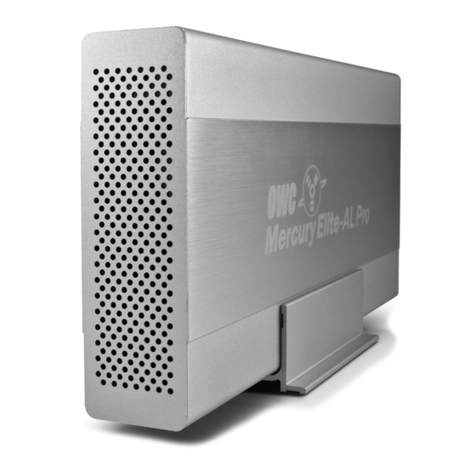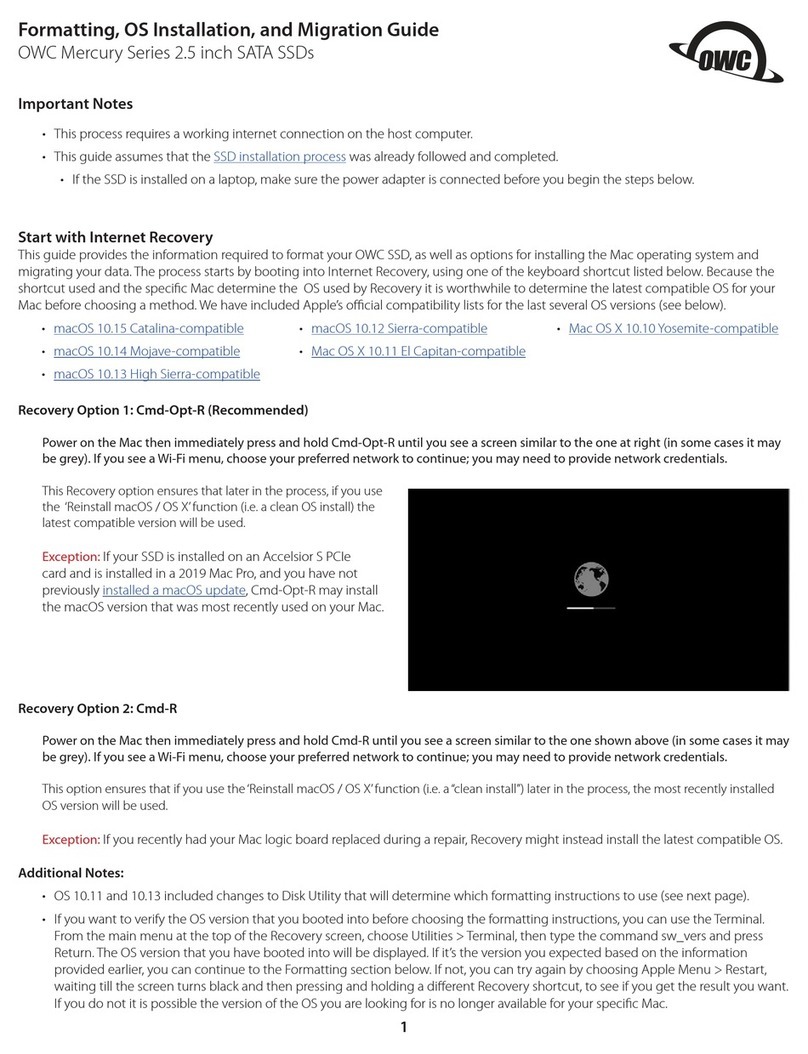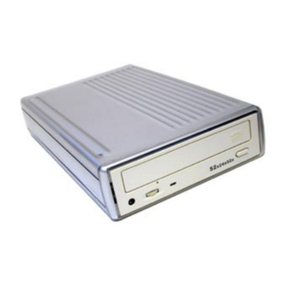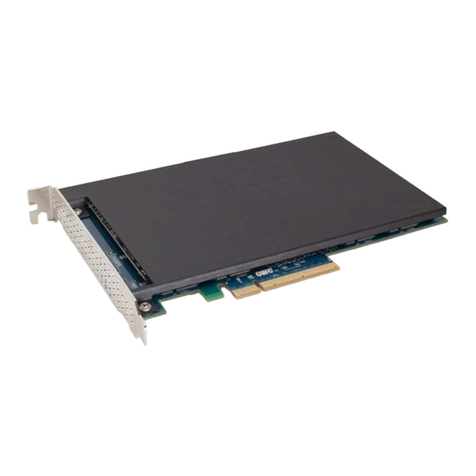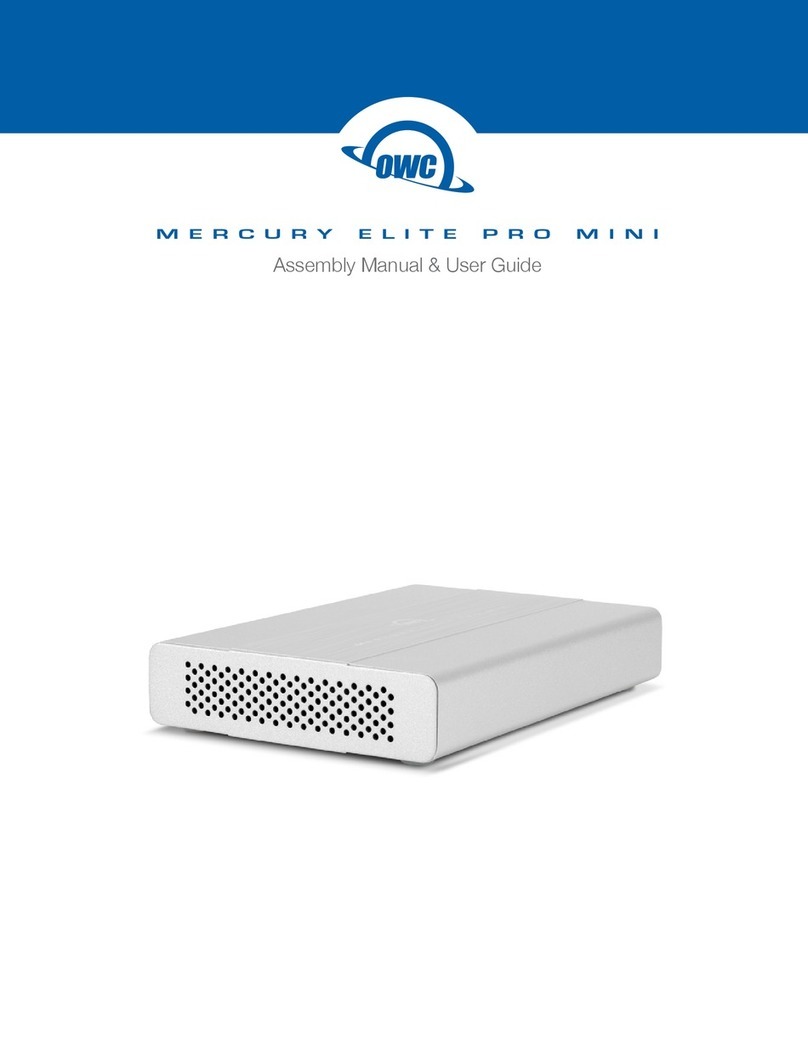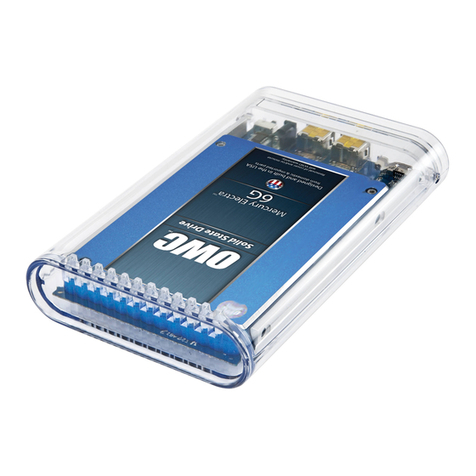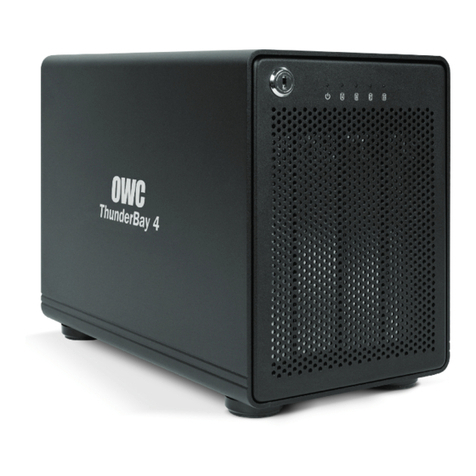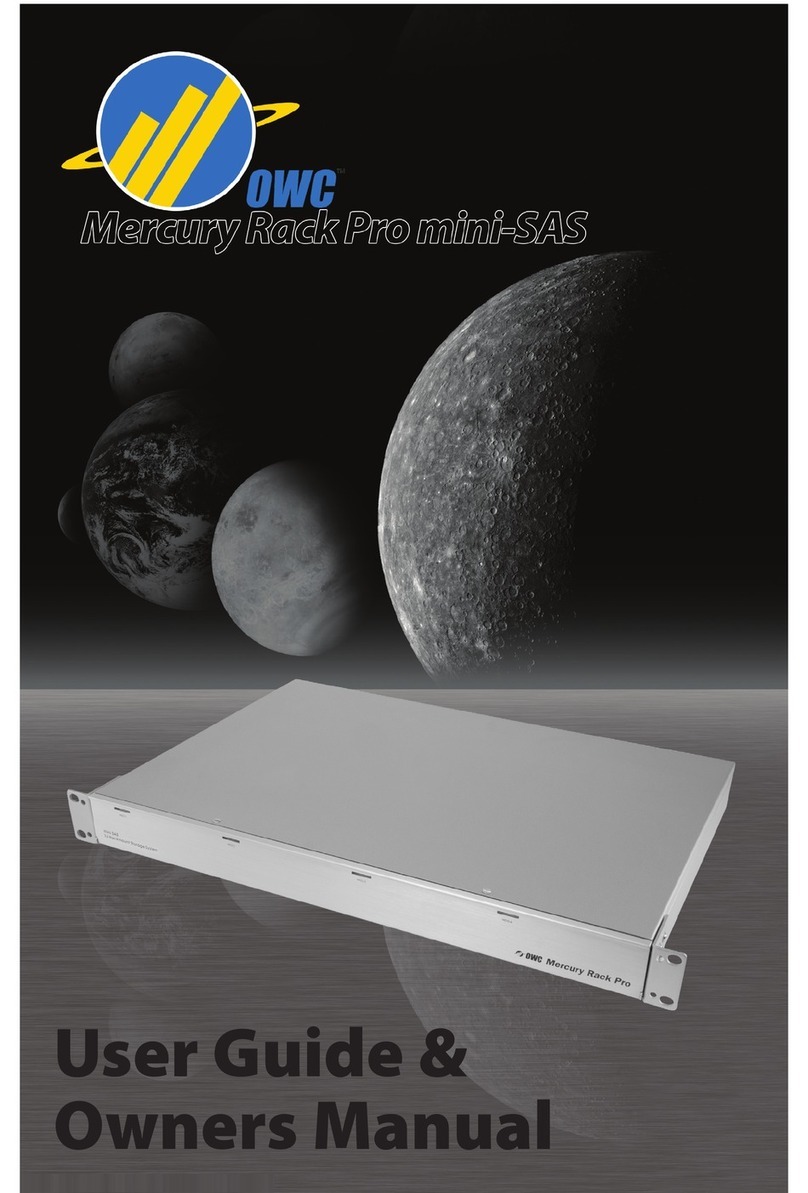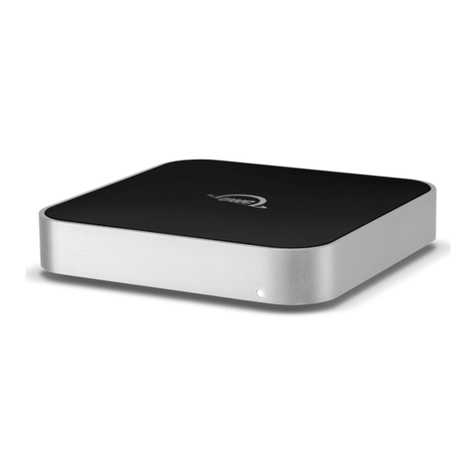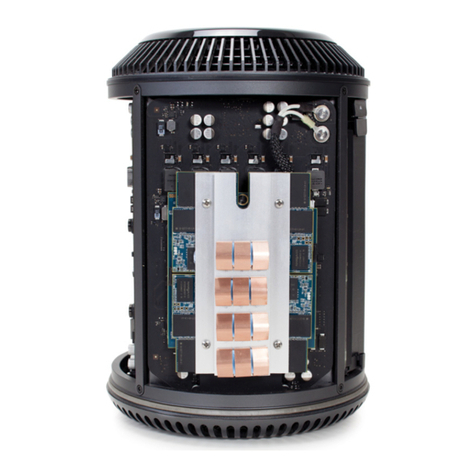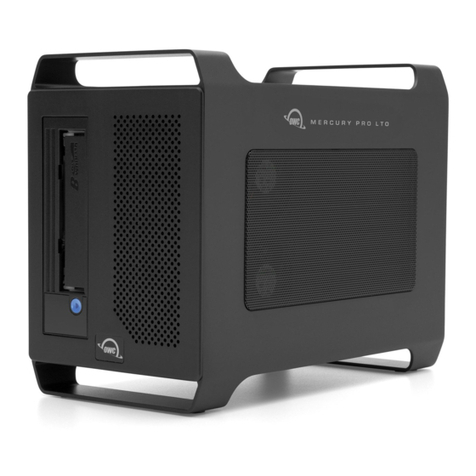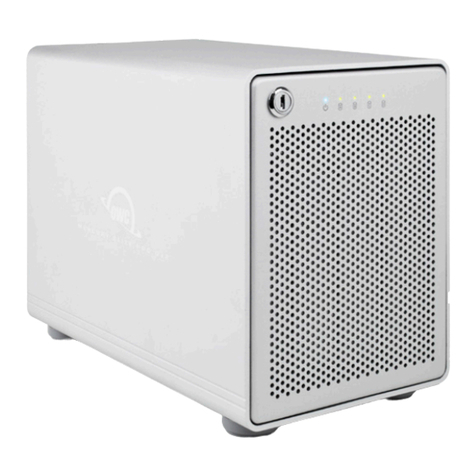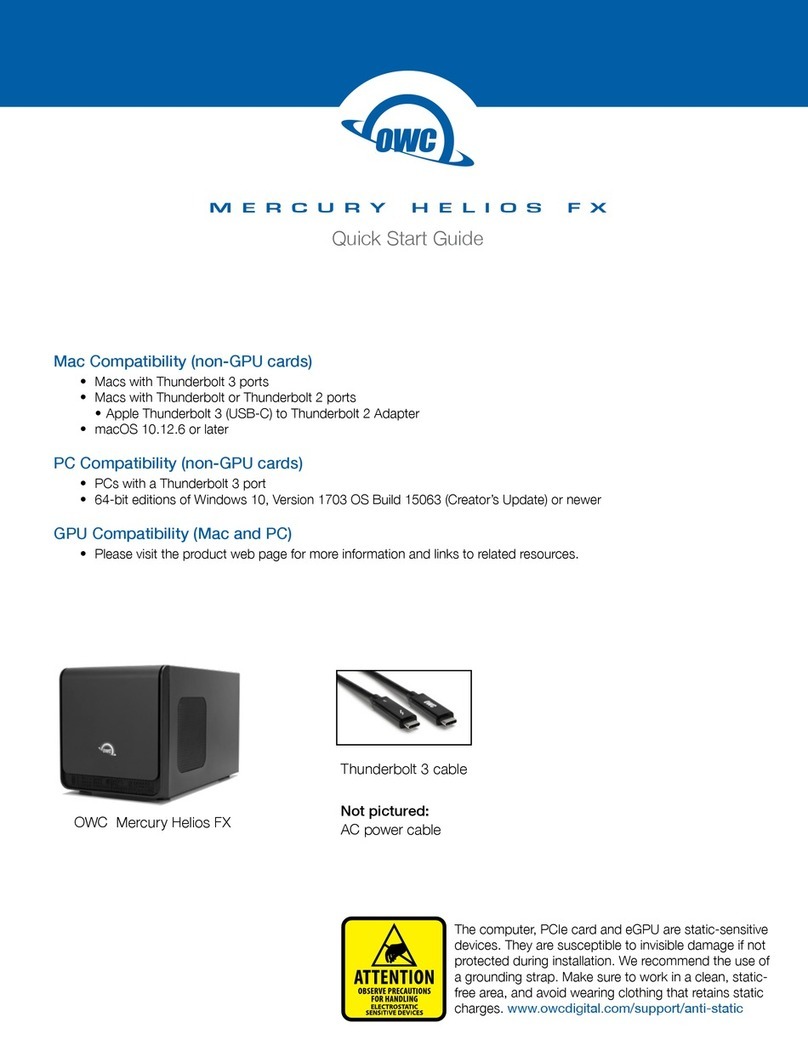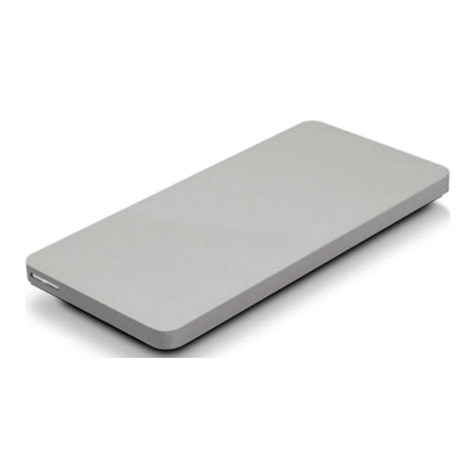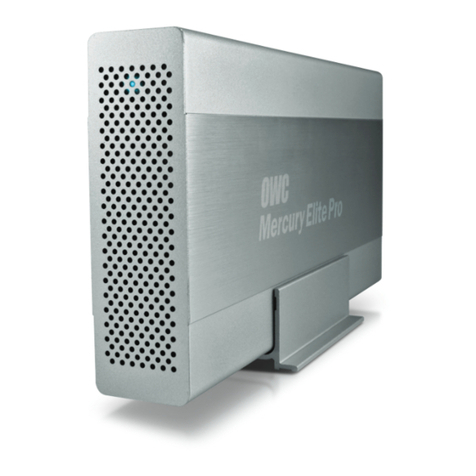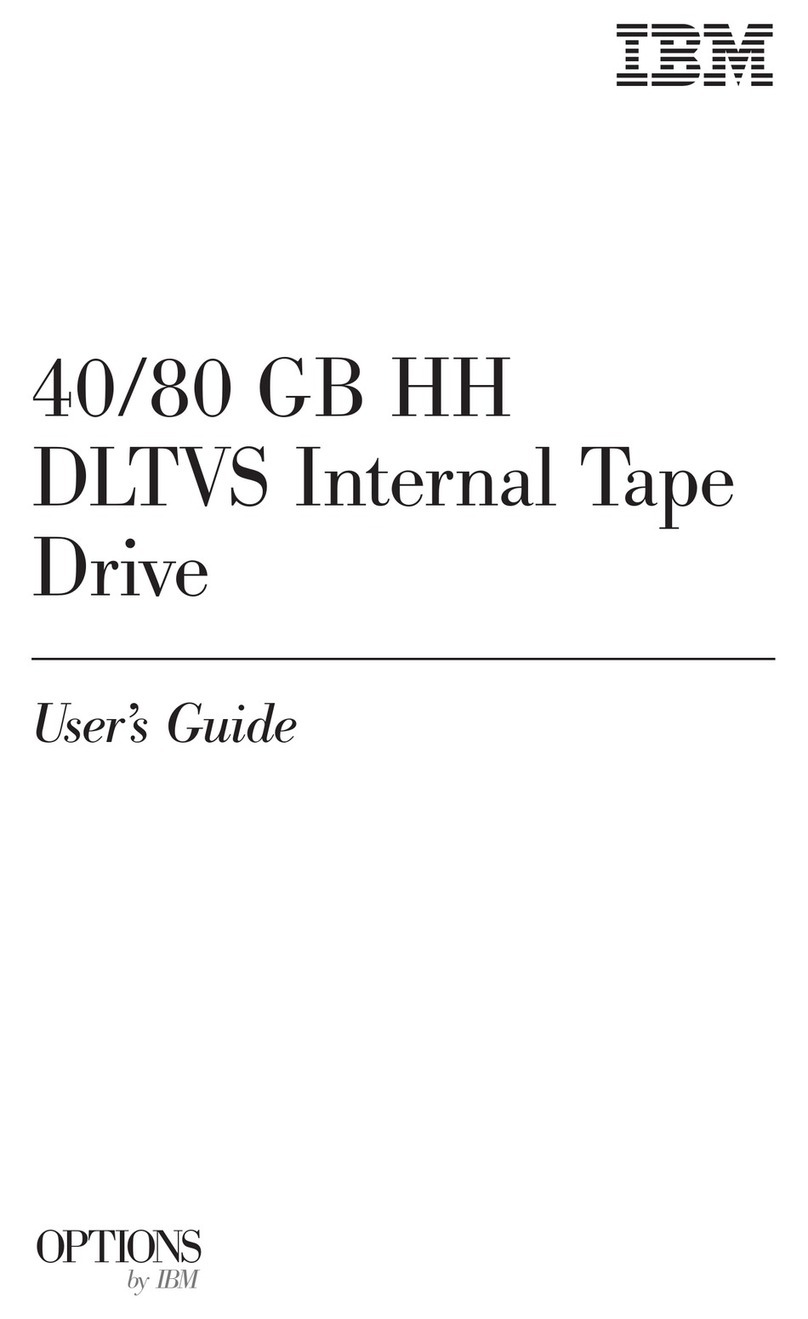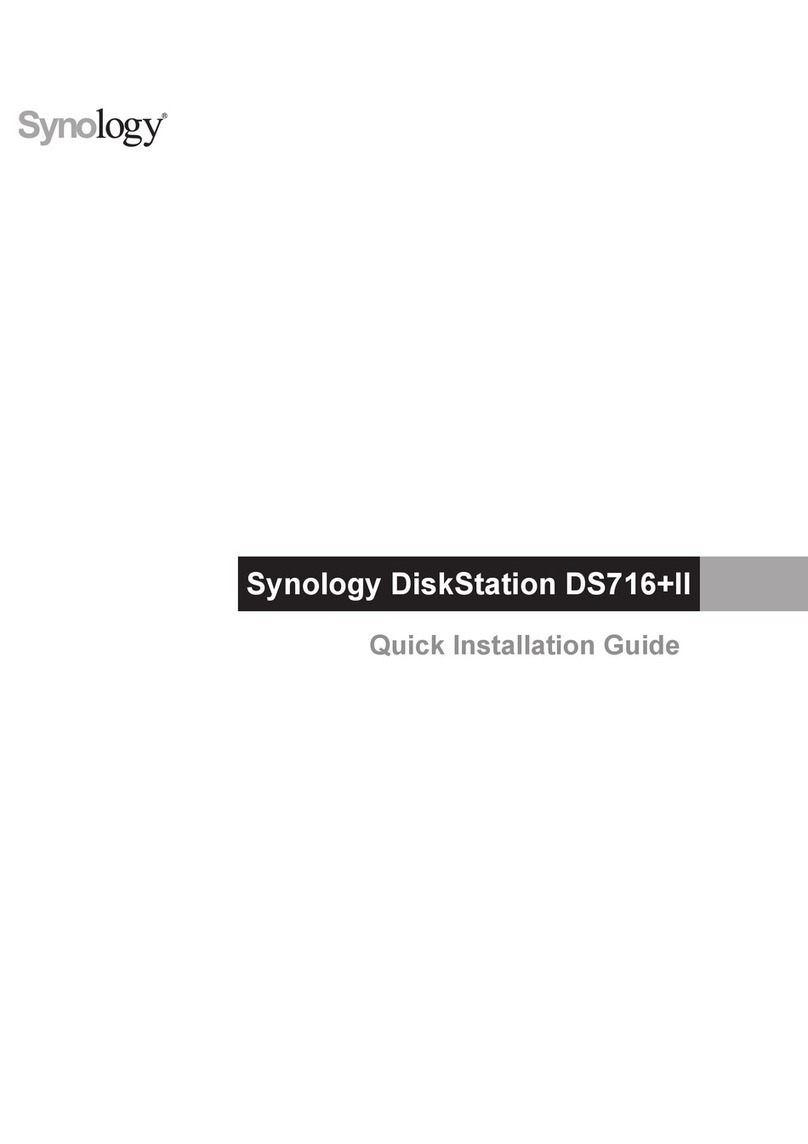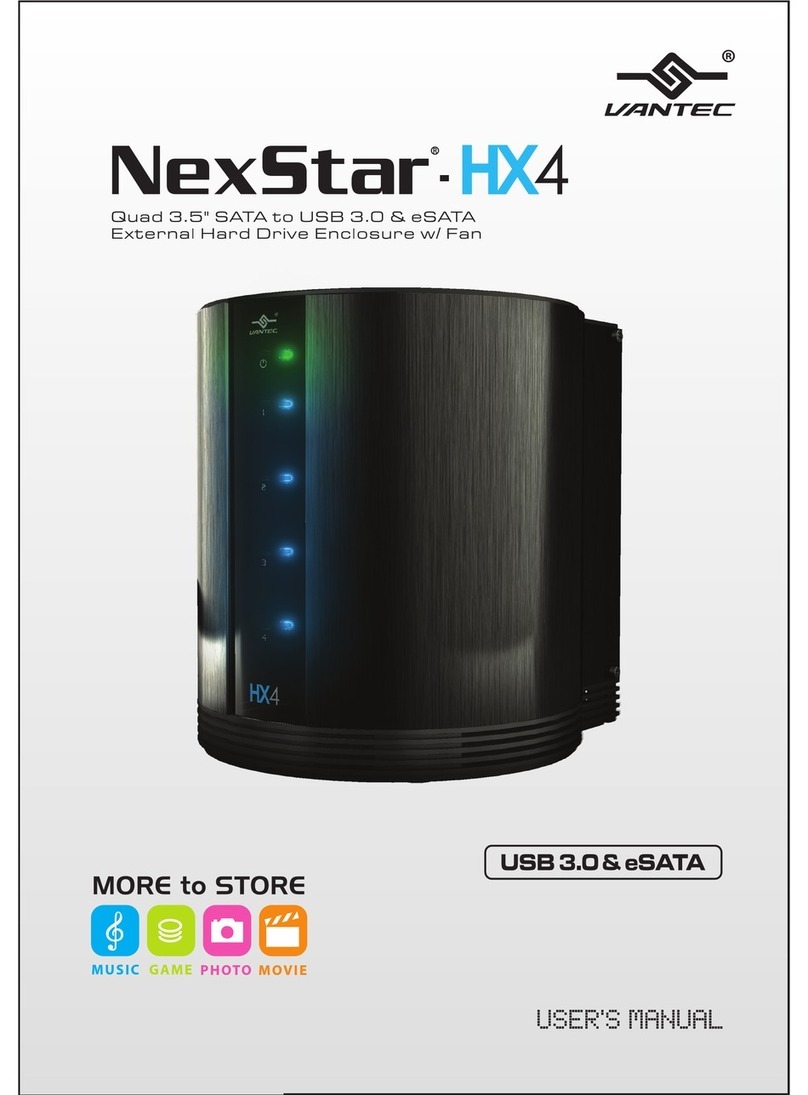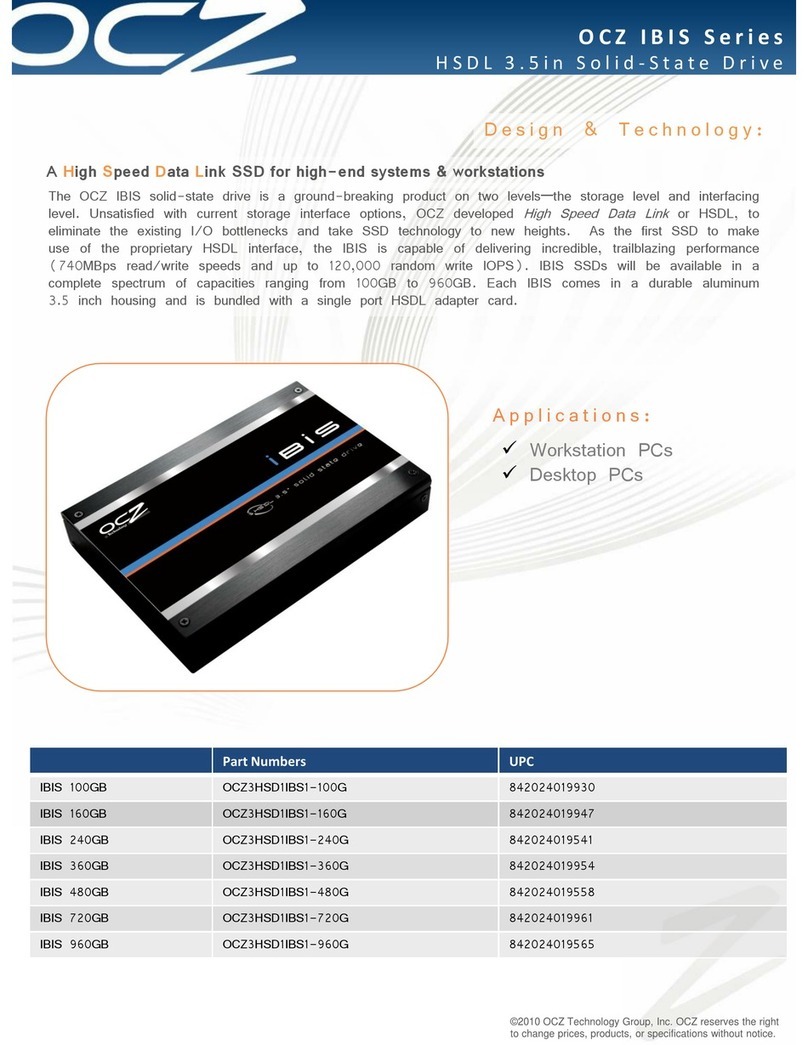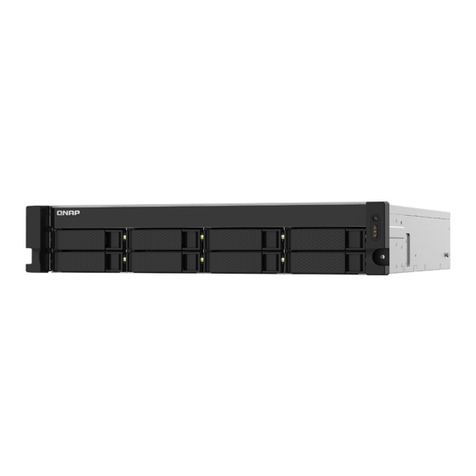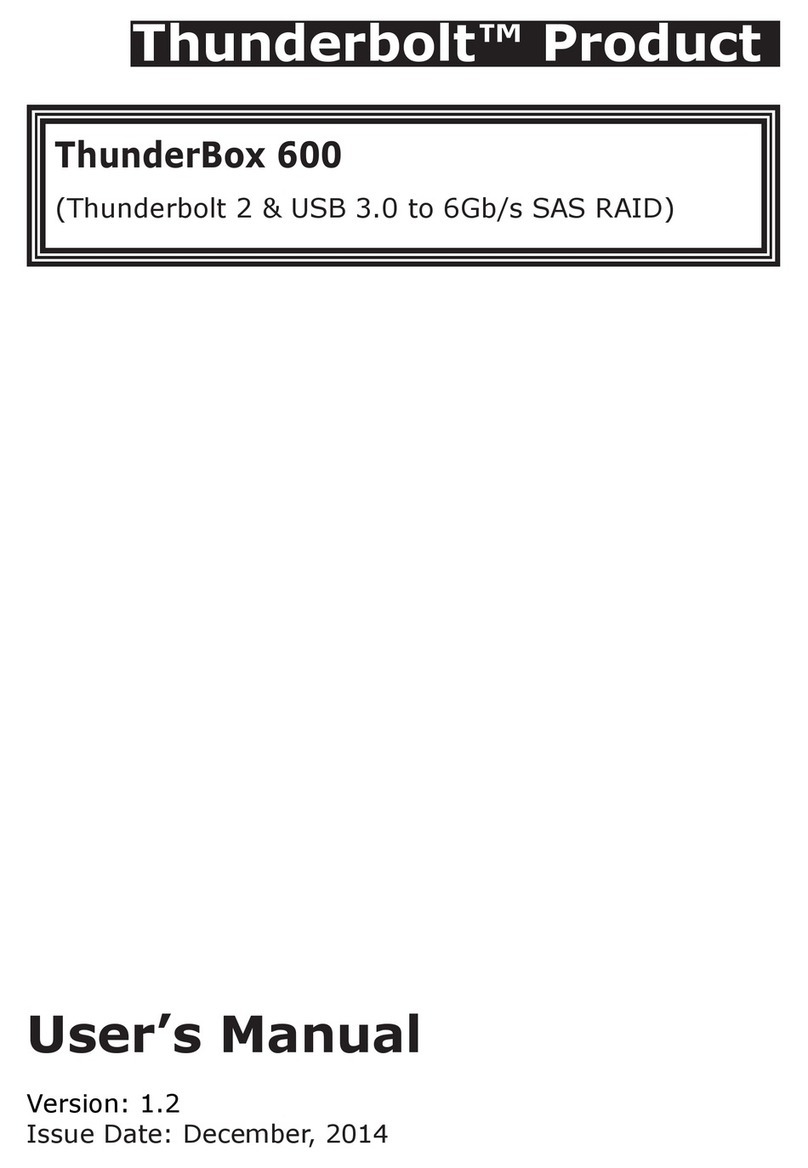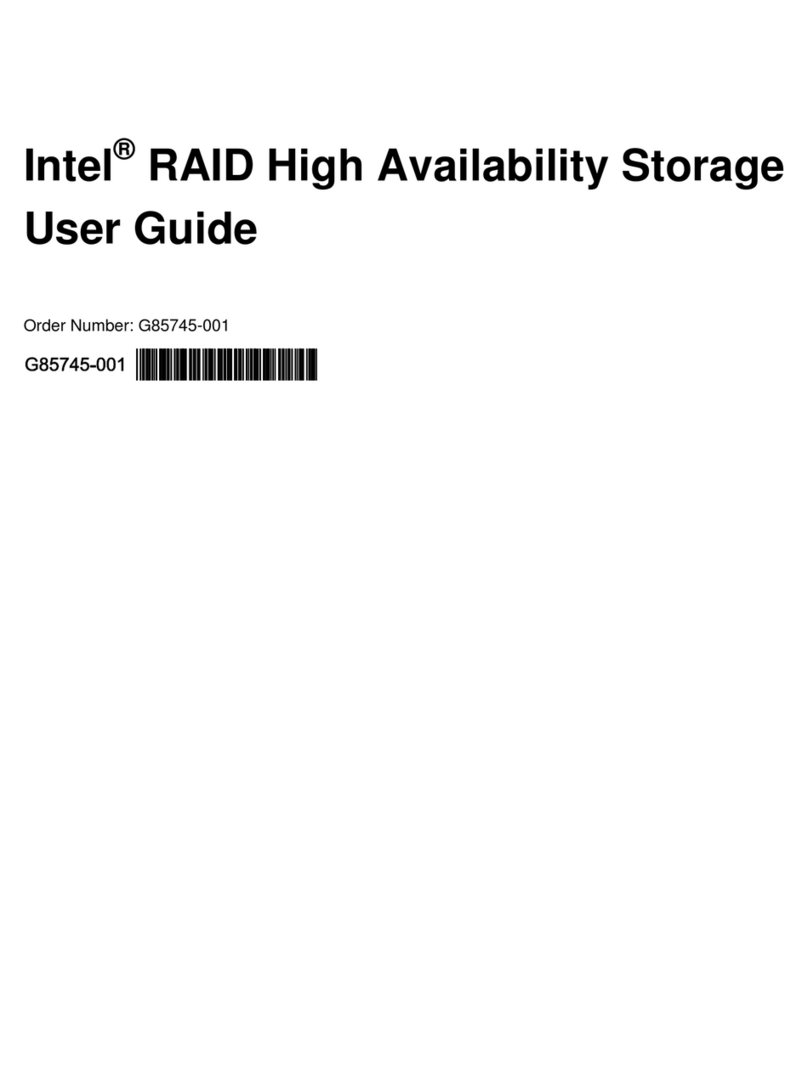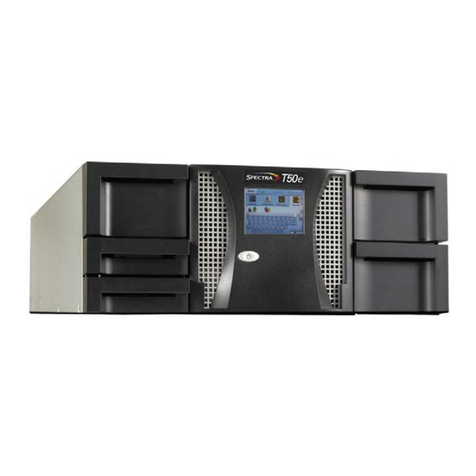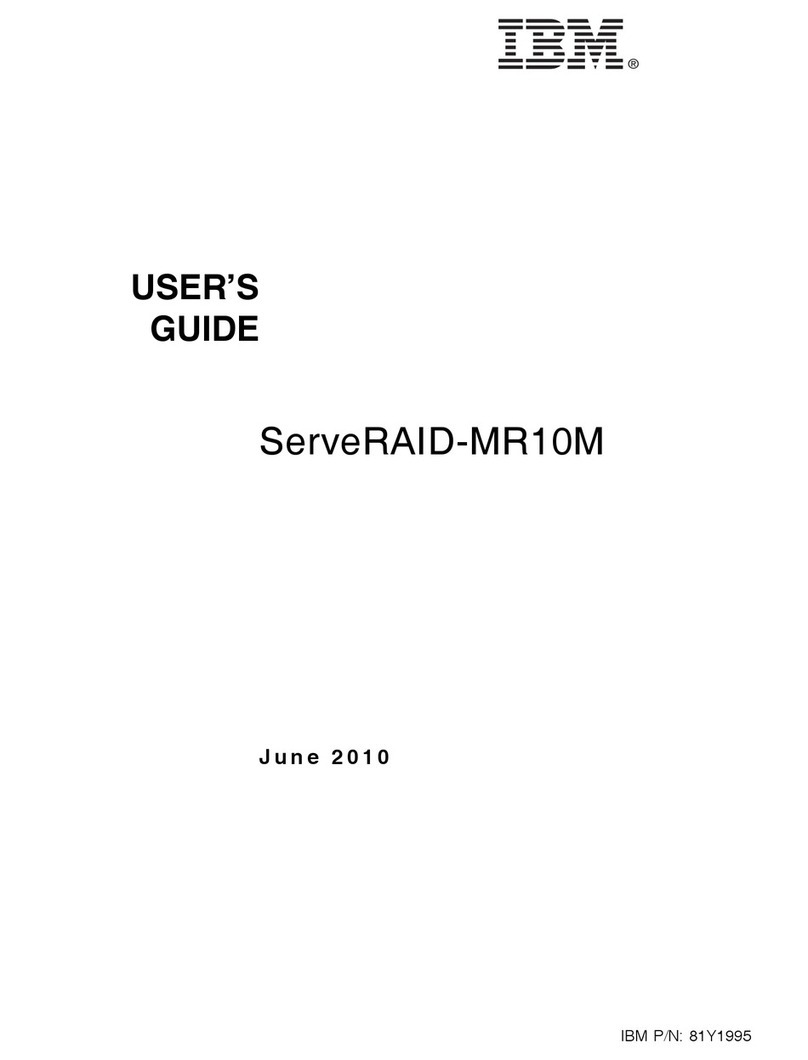
OWC Mercury Elite Pro Dual – USB-C Device Setup
7
2.3 RAID Settings
Changing the RAID Mode
-The RAID mode is controlled by a dial near the top-left corner on the rear plate, in combination
with the RAID set button which is just below the dial.
-The dial has four positions, each labeled with a different RAID mode. To change the RAID mode,
make sure the device is disconnected from the host and powered off, then rotate the RAID dial
using a paper clip or at-head screwdriver (size SL2.5 or SL2 should work) so the arrow points
to the desired RAID mode. Each time the arrow is aligned with a new mode, you should feel
a slight click.
-Once you’ve changed the RAID mode, reconnect the power supply cable then use a paperclip
or small screwdriver to press the RAID Set button. Then connect the USB 3.2 data cable to the host
computer. The button should remain pressed until the new volume(s) appear on your Desktop and/
or a notice is displayed to format the new volume(s).
RAID 0 “Drive Striping” Mode
-The two drives show up as a single large disk with a size equal to the combined capacities
of both drives. RAID 0 is used when speed is the primary objective; it does not provide data
redundancy for protection. The reading and writing of data les is spread across both drives
to gain speed by distributing the workload. This allows for the fastest data transfer rates,
but if one drive fails the whole array becomes corrupted. The data will be lost.
RAID 1 “Drive Mirroring” Mode
-The two drives show up as a single disk with a size equal to the capacity of a single drive from
the array. RAID 1 copies (or “mirrors”) the data from the rst drive to the second drive. This is useful
when reliability and redundancy are more important than capacity or maximum speed. When one
drive fails, it can be replaced and the data can be rebuilt automatically from the other functioning
drive. See the Replacing Drives section for more details on the drive replacement and
rebuild process.
Span Mode
-Both drives show up as a single large disk, but one which functions differently than RAID 0 or RAID
1. The total size depends on the drives installed; unlike RAID 0 or RAID 1 you can use drives of
different capacities. A SPAN is an array (but not a RAID) in which the data is written sequentially
across the drives. When one drive becomes full, subsequent data is written to the second drive.
This combines the capacities of the drives, but it does not provide any performance or data
redundancy benets.
Independent Drive Mode
-Each drive will appear individually without being combined. If you are using drives of differing
capacity and model, or if you are using only one drive, this is the mode to use.
(Continue to next page)
If there is any data on the drives being installed, choosing any mode other than Independent Mode, will result
in the loss of all data on the drives!
Warning
